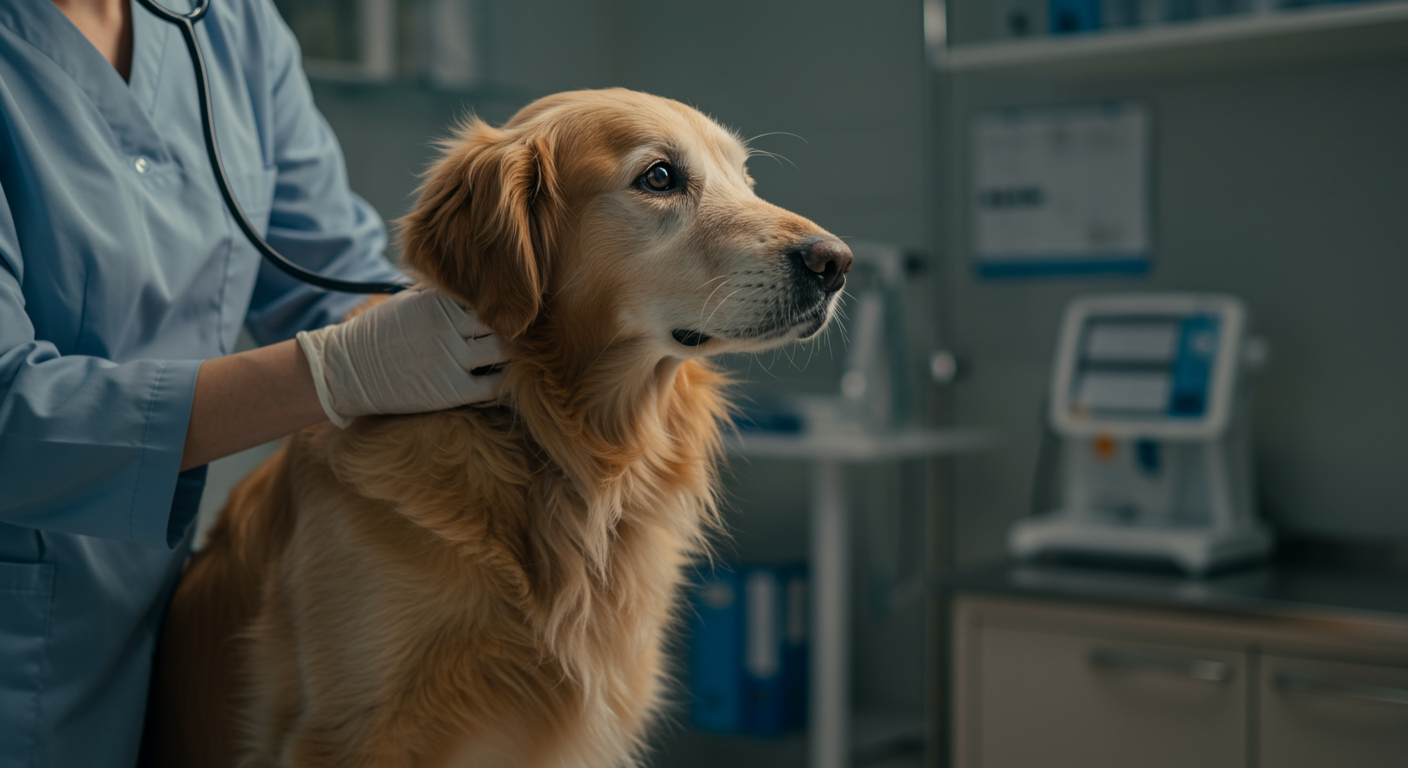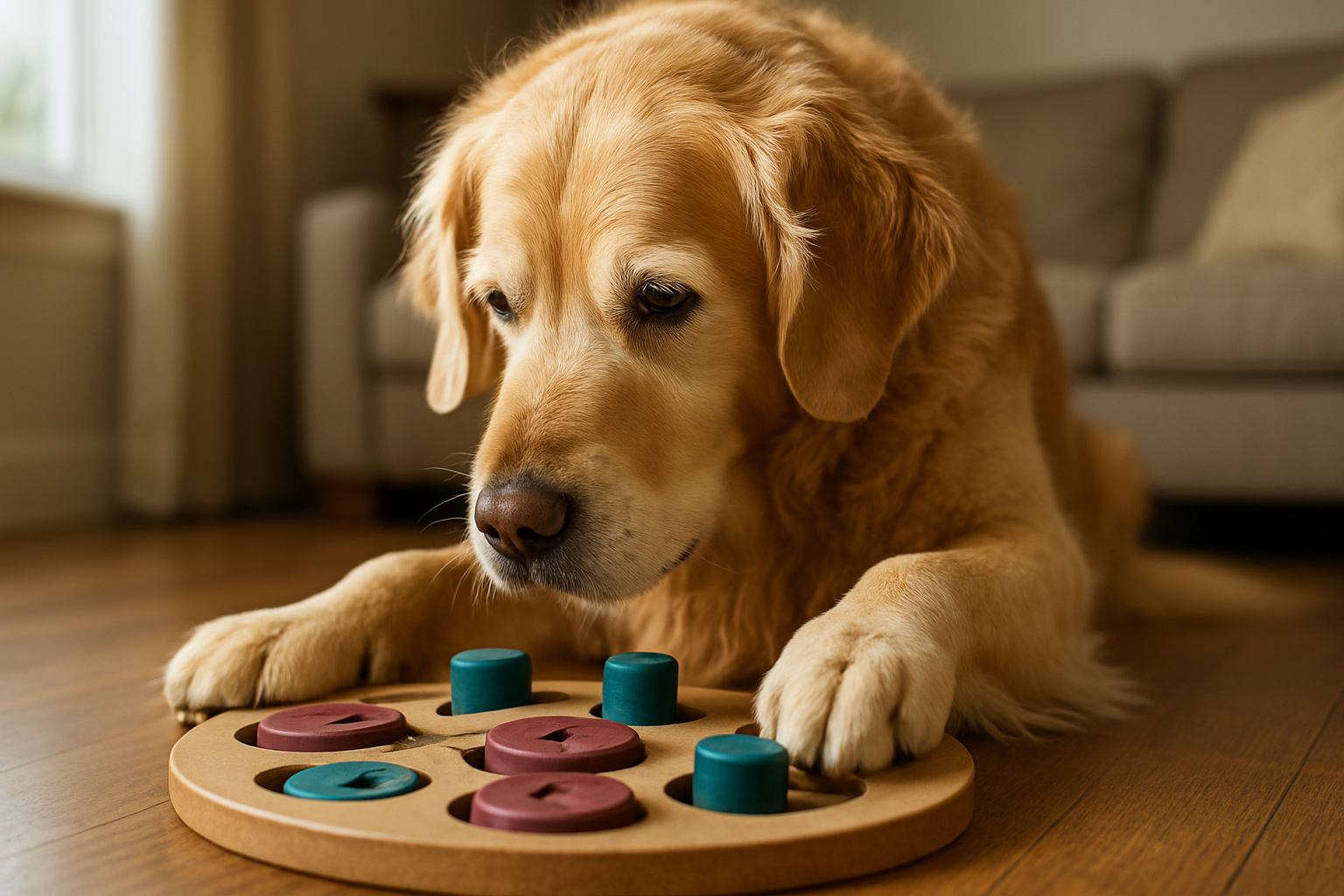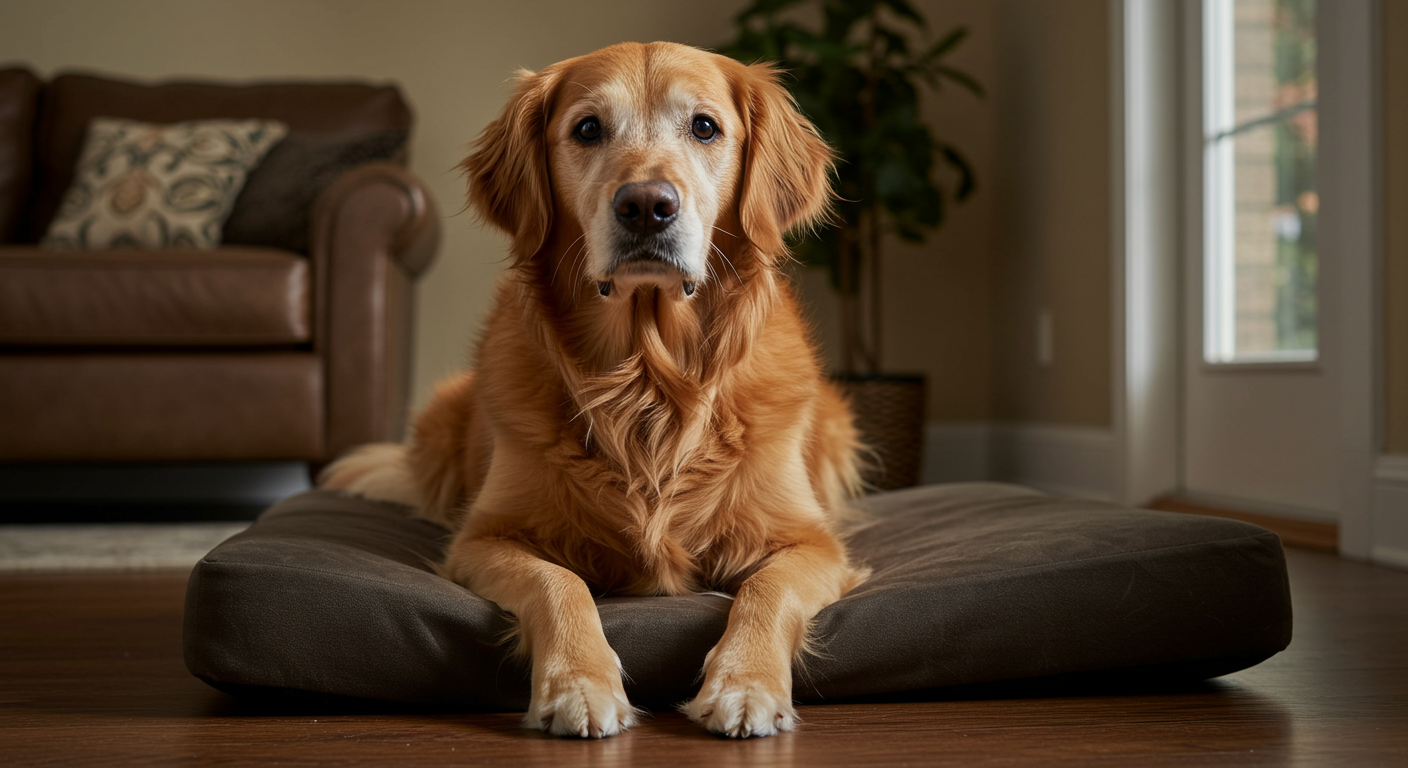Understanding the difference between normal age-related behavioral changes and concerning symptoms represents one of the most important skills Golden Retriever owners can develop as their beloved companions enter their senior years. Aging affects every aspect of a dog’s life, from physical capabilities to cognitive function, social interactions, and emotional well-being. These changes often manifest as behavioral modifications that can range from subtle shifts in daily routines to more noticeable alterations in personality and activity patterns. Recognizing which changes are part of normal aging versus those requiring veterinary attention ensures appropriate care while preventing unnecessary worry about natural aging processes.
Golden Retrievers, known for their consistent temperaments and predictable personalities throughout their lives, may show surprising behavioral changes as they age. These modifications can include increased cautiousness, altered sleep patterns, changes in social interactions, or modifications in activity preferences. While some changes reflect normal adaptations to aging bodies and minds, others may indicate underlying health conditions, pain, or cognitive dysfunction that require professional intervention. The key lies in understanding the typical trajectory of behavioral aging in Golden Retrievers while remaining alert to changes that fall outside normal parameters.
The challenge for owners involves distinguishing between expected age-related changes that require accommodation and understanding versus abnormal changes that warrant veterinary evaluation and potential treatment. This distinction becomes crucial for maintaining quality of life, ensuring appropriate medical care, and adapting family interactions to support aging dogs through their golden years. Success lies in developing realistic expectations about aging while maintaining vigilance for changes that could indicate treatable conditions affecting comfort and well-being.
Understanding Normal Aging in Golden Retrievers
Typical Aging Timeline
Golden Retrievers begin showing subtle age-related changes around 6-7 years old, with more noticeable modifications typically appearing between 8-10 years of age. Understanding this timeline helps owners recognize when changes are occurring within expected parameters versus when they might indicate accelerated aging or underlying health problems.
Early Senior Years (6-8 years): Behavioral changes during this period are often subtle and may include slightly decreased enthusiasm for intense activities, longer recovery periods after exercise, and minor changes in sleep patterns or social interactions.
Middle Senior Years (8-11 years): More noticeable changes typically emerge, including clear preferences for comfortable resting areas, increased selectivity in activities, and possible changes in response to environmental stimuli or social situations.
Late Senior Years (11+ years): Significant behavioral adaptations become common, including marked changes in activity levels, sleep patterns, and social interactions as dogs accommodate physical limitations and potential cognitive changes.
Physical Influences on Behavior
Many behavioral changes in aging Golden Retrievers stem from physical modifications that affect how dogs interact with their environment and family members.
Sensory Changes Impact: Decreased vision or hearing naturally affects behavior, causing dogs to become more cautious, rely more heavily on familiar routines, or show altered responses to environmental stimuli they can no longer detect clearly.
Mobility Limitations: Joint stiffness, muscle weakness, or pain can cause dogs to avoid previously enjoyed activities, show reluctance to navigate stairs or obstacles, or display apparent “laziness” that actually reflects physical discomfort.
Energy Level Modifications: Decreased stamina and endurance affect how dogs approach daily activities, often leading to more selective participation in family activities and increased preference for rest periods.
| Age Group | Physical Changes | Behavioral Manifestations | Normal Adaptations |
|---|---|---|---|
| 6-8 Years | Subtle joint stiffness, minor sensory changes | Slightly less enthusiastic, longer rest periods | Choosing softer sleeping surfaces |
| 8-11 Years | Noticeable mobility changes, clearer sensory decline | Selective activity participation, routine preferences | Avoiding high-impact activities |
| 11+ Years | Significant physical limitations, possible cognitive changes | Major activity modifications, increased dependency | Requiring assistance with daily activities |
Common Normal Behavioral Changes
Activity Level Modifications
Decreased Exercise Enthusiasm: Senior Golden Retrievers typically show reduced enthusiasm for intense exercise, preferring shorter, gentler activities over the high-energy games they once enjoyed. This change reflects normal adaptation to decreased stamina and potential joint discomfort.
Selective Participation: Dogs may become choosier about which activities they engage in, showing continued enthusiasm for favorite pursuits while declining participation in others. This selectivity often reflects wisdom gained about managing their energy and comfort.
Increased Rest Requirements: Senior dogs naturally require more sleep and rest periods throughout the day. What might appear as increased laziness often represents normal physiological needs for additional recovery time.
Modified Play Preferences: Play behavior often evolves from high-intensity physical games to gentler interactive activities, mental stimulation games, or social interaction that doesn’t require intense physical exertion.
Social Interaction Changes
Altered Greeting Behaviors: Senior Golden Retrievers may show less exuberant greetings, preferring calmer interactions over the enthusiastic jumping and spinning they once displayed when family members returned home.
Selective Socialization: Dogs may become more discriminating about social interactions, showing preferences for familiar people and animals while being less interested in meeting new individuals.
Increased Attachment: Some senior dogs develop stronger attachments to specific family members, showing increased following behavior or preference for staying close to favored individuals.
Modified Tolerance Levels: Changes in tolerance for chaos, loud noises, or overwhelming situations are common, with many senior dogs preferring quieter, calmer environments.
Sleep Pattern Evolution
Increased Total Sleep Time: Senior Golden Retrievers typically sleep 16-20 hours daily compared to 12-14 hours for adult dogs. This increase reflects normal physiological changes and energy conservation needs.
Altered Sleep Distribution: Sleep may become more fragmented throughout the day rather than concentrated in longer nighttime periods, with more frequent napping and potentially earlier bedtimes.
Sleep Location Preferences: Dogs often develop stronger preferences for specific sleeping locations, typically choosing warmer, softer, or more secure areas that provide better comfort and support.
Deeper Sleep Periods: Senior dogs may sleep more soundly during rest periods, potentially not hearing sounds that would previously wake them, though this can also indicate hearing loss.
| Sleep Behavior | Normal Senior Changes | Potential Concerns | When to Evaluate |
|---|---|---|---|
| Duration | 16-20 hours daily | Excessive sleeping with lethargy | Sudden dramatic increases |
| Quality | Sound sleep, comfortable positioning | Restlessness, frequent waking | Difficulty settling, pain signs |
| Location | Preference for comfortable spots | Seeking unusual locations | Hiding, avoiding family areas |
| Timing | Earlier bedtimes, more napping | Complete day/night reversal | Significant circadian disruption |
Cognitive Changes and Mental Adaptations
Normal Cognitive Aging
Processing Speed Changes: Senior Golden Retrievers may take longer to respond to commands or process new information, reflecting normal slowing of neural processing rather than cognitive dysfunction.
Learning Capacity Modifications: While senior dogs can certainly learn new things, they may require more repetition and patience compared to younger dogs, and they might show stronger preferences for familiar routines.
Memory Variations: Short-term memory may become less reliable while long-term memories often remain intact, causing dogs to remember long-established routines while occasionally forgetting recent changes or instructions.
Attention Span Changes: Concentration periods may become shorter, requiring training sessions and activities to be adapted to accommodate reduced attention spans without indicating serious cognitive problems.
Adaptive Behaviors
Routine Dependence: Senior dogs often develop stronger preferences for predictable routines, showing anxiety or confusion when familiar patterns are disrupted, which represents normal adaptation rather than pathology.
Environmental Familiarity: Increased reliance on familiar environments and hesitation about new places reflects normal adaptation to sensory changes and reduced confidence in navigating unfamiliar territory.
Cautious Approach: Increased caution around new situations, people, or activities often represents wisdom and self-preservation rather than fearfulness or cognitive decline.
Simplified Preferences: Choosing simpler activities, familiar foods, and established social patterns reflects normal energy conservation and comfort-seeking rather than concerning behavioral regression.
Distinguishing Normal from Concerning Changes
Red Flag Behaviors
Sudden Personality Changes: Dramatic alterations in basic personality traits, such as a gentle dog becoming aggressive or a social dog becoming completely withdrawn, warrant immediate veterinary evaluation.
Severe Disorientation: Getting lost in familiar environments, appearing confused about family members’ identities, or showing significant spatial confusion suggests cognitive dysfunction requiring professional assessment.
Extreme Anxiety or Aggression: New onset of severe anxiety, panic behaviors, or aggressive responses that are completely out of character may indicate pain, cognitive issues, or other medical conditions.
Complete Activity Avoidance: Total withdrawal from all previously enjoyed activities, rather than selective participation, may suggest depression, pain, or serious health problems.
Progressive Monitoring
Gradual vs. Sudden Changes: Normal aging typically produces gradual changes over months or years, while sudden behavioral shifts often indicate medical issues requiring evaluation.
Consistency Patterns: Normal aging changes tend to be consistent day-to-day, while behavioral changes related to medical conditions may fluctuate or worsen progressively.
Reversibility: Some normal aging adaptations may improve with environmental modifications or gentle encouragement, while pathological changes typically persist or worsen without medical intervention.
Functional Impact: Normal aging changes allow dogs to maintain basic functions and quality of life, while concerning changes significantly impair daily activities or well-being.
| Change Type | Normal Aging | Medical Concern | Action Required |
|---|---|---|---|
| Activity Level | Gradual decrease, selective participation | Sudden avoidance, complete withdrawal | Veterinary evaluation for sudden changes |
| Social Behavior | Slight preference changes, maintained relationships | Severe withdrawal, aggression | Professional assessment needed |
| Cognitive Function | Slower processing, maintained abilities | Confusion, disorientation | Cognitive evaluation recommended |
| Sleep Patterns | Increased sleep, comfortable rest | Severe disruption, restlessness | Medical examination indicated |
Managing Normal Behavioral Changes
Environmental Adaptations
Routine Consistency: Maintaining predictable daily routines helps senior dogs feel secure and reduces anxiety associated with age-related changes in processing and adaptation abilities.
Comfort Enhancements: Providing comfortable resting areas, easy access to resources, and environmental modifications that accommodate physical limitations supports natural behavioral adaptations.
Stimulation Balance: Offering appropriate mental and physical stimulation that matches reduced energy levels and capabilities helps maintain engagement without causing stress or exhaustion.
Safety Modifications: Adapting the environment to accommodate sensory changes, mobility limitations, and altered awareness helps ensure safety while supporting independence.
Activity Modifications
Gentle Exercise Programs: Adapting exercise routines to accommodate reduced stamina and potential joint limitations while maintaining appropriate activity levels for physical and mental health.
Mental Stimulation Alternatives: Providing cognitive challenges through puzzle toys, scent work, and training exercises that don’t require intense physical exertion but maintain mental engagement.
Social Activity Adjustments: Modifying social interactions to accommodate changed preferences while maintaining important social connections that support emotional well-being.
Rest Period Respect: Allowing for increased rest needs without forcing activity, while also providing gentle encouragement for appropriate engagement when dogs are alert and comfortable.
Communication and Interaction Adjustments
Family Education
Understanding Changes: Educating all family members about normal aging changes helps ensure consistent, appropriate responses to behavioral modifications and prevents misinterpretation of natural adaptations.
Patience Development: Encouraging patience with slower responses, increased needs, and modified capabilities helps maintain positive relationships while supporting dogs through aging transitions.
Expectation Adjustment: Adapting expectations about activity levels, responsiveness, and capabilities helps prevent frustration while maintaining appropriate standards for health and well-being.
Positive Reinforcement: Emphasizing positive reinforcement for appropriate behaviors and gentle redirection for problematic behaviors supports confidence and maintains training relationships.
Professional Guidance
Veterinary Consultation: Regular veterinary check-ups help distinguish between normal aging changes and medical conditions while providing guidance for managing age-related behavioral modifications.
Training Support: Working with professional trainers experienced in senior dog behavior can provide valuable strategies for managing normal aging changes while maintaining positive relationships.
Behavioral Evaluation: Professional behavioral assessment may be helpful for significant changes or when owners are uncertain about whether changes fall within normal parameters.
Ongoing Monitoring: Establishing protocols for monitoring behavioral changes helps identify when normal aging transitions into concerning territory requiring intervention.
Quality of Life Maintenance
Comfort Optimization
Physical Comfort: Ensuring physical comfort through appropriate bedding, temperature control, and pain management when needed supports behavioral well-being and reduces stress-related behavioral changes.
Emotional Security: Providing emotional security through consistent routines, gentle handling, and maintained social connections supports psychological well-being during aging transitions.
Environmental Predictability: Creating predictable environments that accommodate sensory and cognitive changes helps reduce anxiety and supports successful adaptation to aging-related behavioral modifications.
Individual Preferences: Respecting individual preferences that develop with age while gently encouraging appropriate activity and engagement helps maintain quality of life and dignity.
Engagement Strategies
Adapted Activities: Modifying favorite activities to accommodate changing capabilities while maintaining enjoyment and engagement supports continued quality of life and behavioral health.
Social Connection: Maintaining important social connections through adapted interaction styles helps prevent isolation and supports emotional well-being during behavioral transitions.
Mental Stimulation: Providing appropriate mental challenges that match cognitive capabilities helps maintain mental sharpness while accommodating normal aging changes in processing speed and attention.
Purposeful Activities: Offering activities that provide sense of purpose and accomplishment helps maintain confidence and self-esteem during periods of significant behavioral adaptation.
| Quality of Life Area | Adaptation Strategies | Monitoring Indicators | Support Methods |
|---|---|---|---|
| Physical Comfort | Soft bedding, easy access, temperature control | Pain signs, movement quality | Veterinary care, environmental modifications |
| Mental Engagement | Age-appropriate puzzles, gentle training | Interest level, cognitive response | Varied activities, positive reinforcement |
| Social Connection | Adapted interactions, maintained relationships | Social responsiveness, engagement | Family education, consistent approaches |
| Emotional Well-being | Routine consistency, security, gentle handling | Anxiety signs, confidence level | Patience, understanding, professional support |
Long-Term Behavioral Health
Monitoring Protocols
Behavioral Baselines: Establishing clear baselines for normal behavioral patterns helps identify when changes move beyond expected aging parameters and may require intervention.
Progressive Tracking: Monitoring behavioral changes over time helps distinguish between gradual normal aging and more rapid changes that might indicate health problems.
Quality of Life Assessment: Regular evaluation of overall quality of life helps ensure that behavioral changes aren’t significantly impacting happiness and well-being.
Professional Relationships: Maintaining relationships with veterinary and behavioral professionals provides resources for addressing concerns and optimizing management of age-related changes.
Preventive Approaches
Health Maintenance: Maintaining optimal physical health through appropriate veterinary care, nutrition, and exercise helps prevent or minimize behavioral changes related to pain or illness.
Mental Stimulation: Providing ongoing mental stimulation and social interaction may help slow cognitive aging and maintain behavioral flexibility throughout senior years.
Environmental Stability: Creating stable, supportive environments helps reduce stress that could accelerate behavioral aging or create unnecessary anxiety about natural changes.
Family Preparation: Preparing family members for expected changes helps ensure appropriate responses and support throughout the aging process.
Embracing the Golden Years Journey
Understanding and accepting normal behavioral changes in aging Golden Retrievers represents a crucial aspect of providing compassionate care throughout their golden years. These changes, while sometimes challenging to witness, often reflect the wisdom and adaptation that comes with a life well-lived. Rather than viewing behavioral modifications as losses, they can be understood as natural evolutions that allow dogs to maintain comfort and dignity while accommodating the physical and cognitive changes that accompany aging.
The journey through behavioral aging often deepens the bond between Golden Retrievers and their families as communication becomes more nuanced and care becomes more personalized. Many owners discover that their relationship with their senior dog becomes richer and more meaningful as they learn to appreciate quieter moments, gentler interactions, and the peaceful contentment that often characterizes well-cared-for senior dogs.
Success in managing normal behavioral changes lies in maintaining realistic expectations while providing appropriate support, understanding, and adaptation. The goal is not to prevent all aging-related changes but to ensure that these natural transitions occur with dignity, comfort, and continued quality of life.
Your commitment to understanding and supporting your Golden Retriever through normal behavioral aging demonstrates the depth of your love and dedication to their well-being. By recognizing what constitutes normal aging, providing appropriate accommodations, and maintaining vigilance for concerning changes, you ensure that your beloved companion can navigate their golden years with the support, understanding, and love they deserve throughout this natural and inevitable journey.

Rafael Souza is a digital marketing strategist and lifelong dog enthusiast. Passionate about Golden Retrievers, he shares practical, research-based tips to help owners provide healthier and happier lives for their furry companions.






3 thoughts on “Behavioral Changes in Aging Golden Retrievers: What’s Normal”